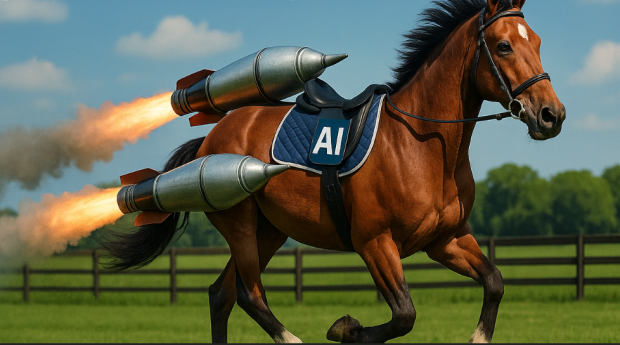Why software development rarely tastes good, when you don’t let the chefs cook
There’s this brilliant video floating around the internet: A dad asks his kids to write down step-by-step instructions for making a peanut butter sandwich. (https://www.youtube.com/shorts/CM9JIVG6SQk)
The kids try their best. “Take a piece of bread.” “Open the jar.” “Use a knife to spread the peanut butter.”
Sounds easy. But the dad follows the instructions literally: He uses the wrong side of the knife. Rubs the closed jar on the bread. Places the bread upside down. And proudly says: “I did exactly what it said.”
Funny. And tragically accurate, if you’ve ever worked in software development.
Welcome to the land of process
In many companies, we don’t say: “Build us software that helps people solve problem X.” Instead, we get a wall of processes. Requirement process. Development process. QA process. Security checklist. Architecture review. Documentation standards.
Everything is described in detail. And yet the actual goal? Often a vague buzzword salad with some AI and “innovation” dressing on top.
The chef, the duck, and the misunderstanding
Now imagine walking into a Michelin-starred restaurant and saying: “I’ll have the duck, please. Sous-vide at exactly 58.3°C for 63 minutes. Then pan-seared in ghee not butter. Skin lightly crisped, but not crunchy.”
You’ll either be laughed at politely or shown the door. Because you don’t go to a professional to tell them how to do their job. You go because they know what they’re doing.
But in software development? We do exactly that. We tell engineers not only what to build but how to build it. Framework, language, database, CI/CD steps, naming conventions… you name it. And god forbid someone has their own idea.
The craft and the illusion
There are two major problems:
1. Fewer and fewer developers understand their craft. Writing code != building software. Software development is about thinking in models, understanding users, making trade-offs, and designing solutions that evolve.
2. We believe processes create products. They don’t. Processes can help, but they can’t replace thinking. And when they become the main focus, they kill what matters most: creativity, ownership, innovation.
From sandwiches to stud farms
Some companies treat innovation like animal husbandry: Defined breeding lines. Optimized insemination stations. Carefully maintained paddocks. Groomed workflows for every whinny.
And then they wonder why they keep getting horses. Faster horses. Shinier horses. Very expensive horses.
But no cars.
As Henry Ford once said:
“If I had asked people what they wanted, they would have said faster horses.”
We’re still doing it today. Only now we call it “cloud-native enterprise-ready SaaS.”
The bottom line
If you want real software, stop pretending that checklists are creativity. Trust your engineers. Talk about outcomes, not steps. And for heaven’s sake: stop telling the chef how to cook the duck.
Because if you still believe a good breeding plan will somehow produce a car, you may end up with a very fast horse. But you’ll never leave the paddock.
